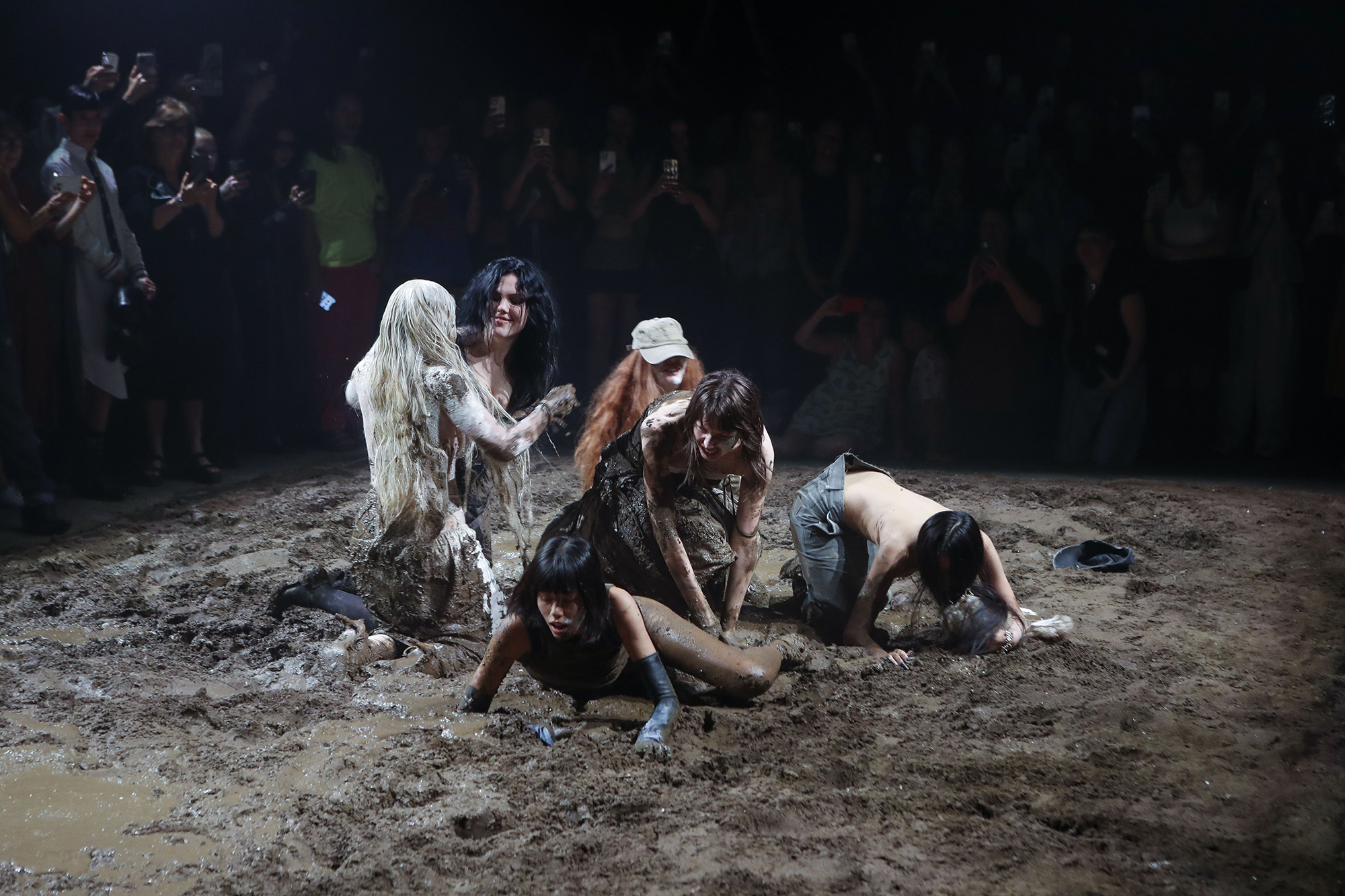What do we do with dirt at a time when its meanings grow ever more complicated?
Sometimes the cleanest things are achieved by the dirtiest methods. In the Roman era, garments were restored to dazzling white with the aid of stale urine, which acted as a potent natural bleach. The practice continued for centuries. In The Complete Chamber Maid (1677), Hannah Woolley advises that stubborn stains be treated thus: ‘lay it all night in urine, rub all the spots in the urine as if you were washing in water; then lay it in more urine another night and rub it again’.
There is no actual urine in Dirty Looks, an exhibition currently on view at the Barbican in London. It’s simulated: a pair of jeans by JordanLuca with fake piss stains sits alongside other trompe l’oeil leakages including Di Petsa’s breast-milk-soaked top and period-blotched knickers. The premise of the show is a compelling one. Rather than fixating on the pristine finished garment, kept safe from time and circumstance by the diligent archivist, Dirty Looks wades into the mucky territory of dirt, decay, stains and waste, overriding fashion’s usual preservation impulses in favour of something messier. In doing so, it proposes an ambitious meditation on clothing as something we live in, live through and, occasionally, are outlived by; garments positioned not only as material witnesses to the body, but as physical entities in their own right, subject to the indignities of ageing and capable of great disruptive power.
For a show organised around a central tension between cleanliness and dirt, there’s plenty of the latter. Take a series of garments from Hussein Chalayan’s 1993 graduate show The Tangent Flows, pieces he famously interred in a friend’s back garden for six months, fabrics marinated in Thames-side soil and rusted with the help of metal filings to dusty orange and mottled verdigris. The resulting dresses and waistcoats are achingly delicate, as if ready to disintegrate on the hanger, yet hold the authority of ancient relics; gifts from the earth returned to the surface. There are also some pleasing bog-bodies-inspired pieces on the ground floor by Studio Solitaire, likewise buried for several months, alongside grubby white tights, beautifully ruined dresses and fake moth holes. But there is nothing in the space that smells bad or forces one to genuinely recoil. Even the sweat has been made beautiful, courtesy of Alice Potts’ dazzling Madame Grès dress with its delicate strata of pleats transformed into a work of biocouture. Potts makes salt solutions derived from sweat. When painted onto fabric, the solution grows crystals in a matter of hours, their formation dictated by the biological makeup of each person’s perspiration.
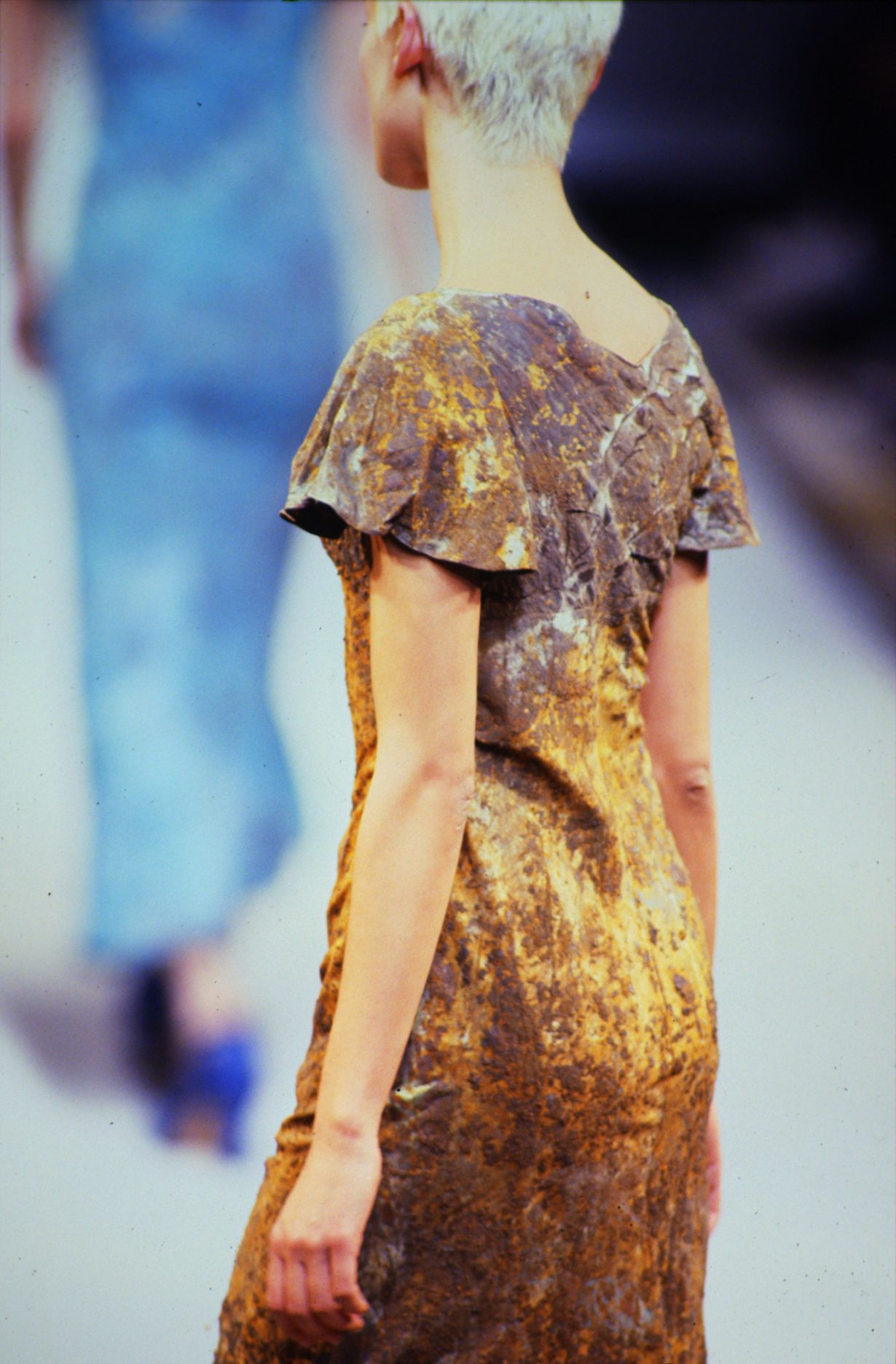
Elsewhere, more complicated meditations on filth as both material and metaphor include Vivienne Westwood and Malcolm McLaren’s Autumn/Winter 1982 collection Nostalgia of Mud, borrowing a phrase coined by Émile Augier in 1855 and later famously quoted in Tom Wolfe’s 1970 essay ‘Radical Chic’. Wolfe mocked the upper classes’ yearning for the authenticity of the ‘lower orders’ as they indulged in fantasies of moral grit without any real commitment to upending the status quo. Westwood and McLaren made that irony literal: folkloric skirts, raw-cut sheepskin and clay-toned palettes invoke a preindustrial, prelapsarian vision. ‘The roots of our culture lie in primitive societies,’ McClaren commented at the time.
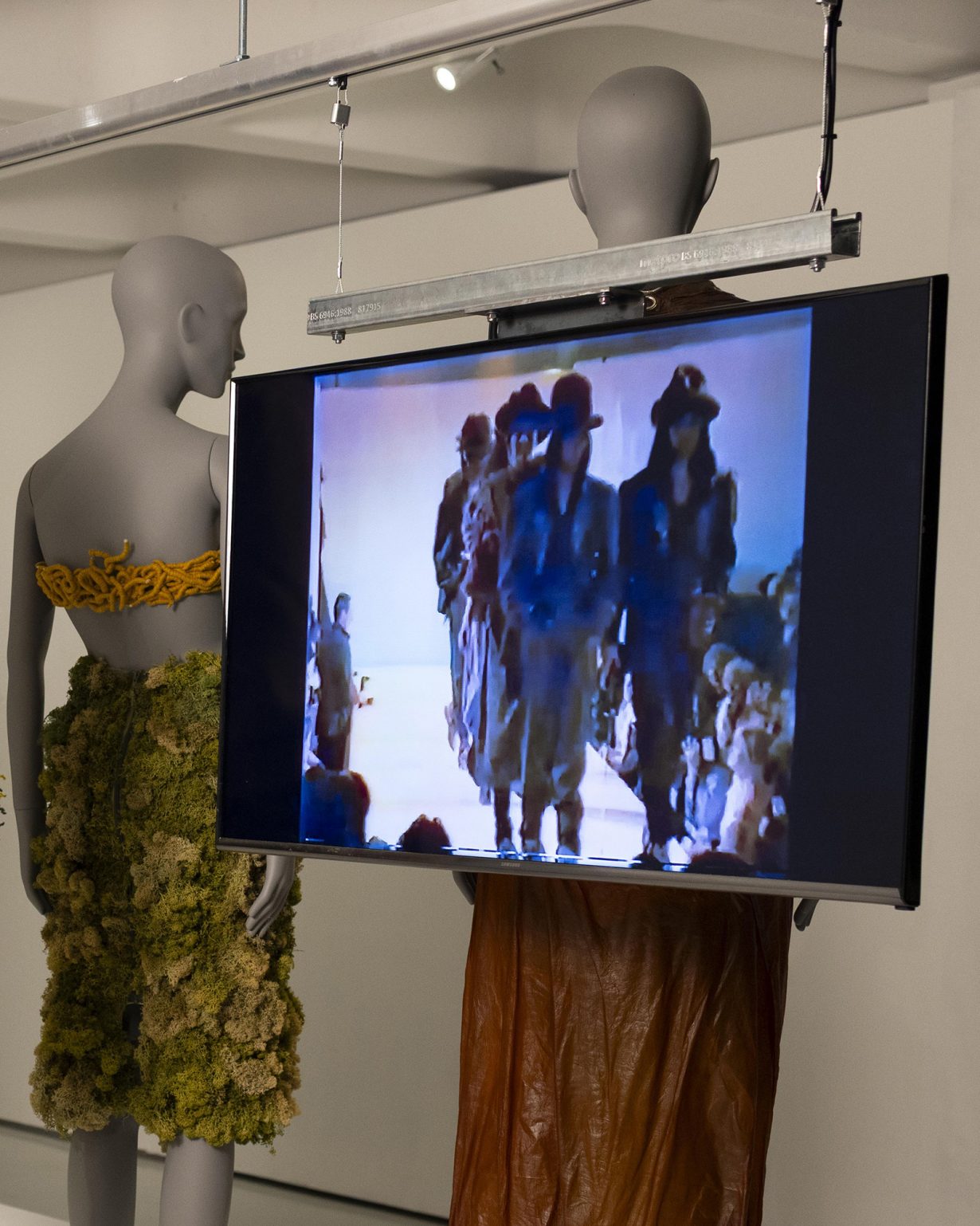
The show’s central tension is also where it gets stuck in the mud. The wall text accompanying the piss-stained jeans quotes the anthropologist Mary Douglas’s observation that ‘holiness and impurity are at opposing poles’. In Purity and Danger (1966), Douglas argues that dirt is never an absolute category. Rather, it is ‘matter out of place’. What one culture calls pollution, another calls sacred. Cleanliness, in her account, is a form of social ordering – a way of policing what belongs and what must be expelled. Dirty Looks gestures towards this logic, treating filth as a site of transgression and renewal. Yet in its devotion to visual and material unruliness, the exhibition risks smoothing away Douglas’s wider political insight. The question is not simply what dirt looks like, but who is considered dirty, and why.
One of the main promotional images for Dirty Looks is taken from American designer Elena Velez’s Spring/Summer 2024 show. A video from the runway loops, its mud-wrestling finale featuring models writhing around in the muck, their ruffled skirts getting filthy as they performatively claw at one another. The footage is great fun. The urge to desecrate a pristine garment is a fantasy deep-rooted in childhood, a time when one learns rules of propriety and hygiene: brush your teeth, bathe regularly, don’t sully clothes meant for special occasions. But Velez’s inclusion complicates the show’s conceptual framework. The exhibition glibly positions her as an iconoclast who ‘seeks to subvert fashion’s female archetypes’, countering ‘the sanitised versions of feminism that are often portrayed and promoted by fashion’. In doing so, she becomes yet another example of dirt as a disruptive force, capable of muddying the mainstream demand for more palatable modes of femininity.
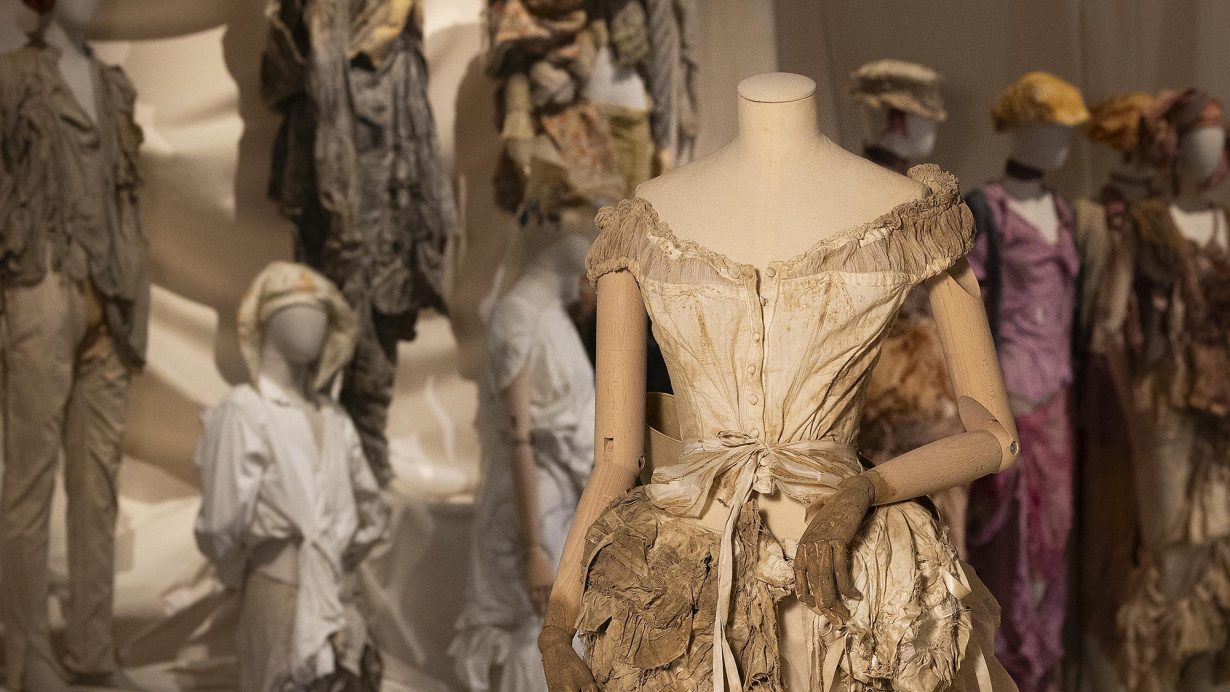
This framing amounts to a baffling exercise in curatorial cleansing. Velez isn’t just some sartorial provocateur, widening the aperture for what a woman can be by testing the boundaries of taste or decorum. She’s a designer whose work, and persona, operate within a rapidly moving Overton window, flirting with an emergent form of fashion-adjacent fascism that is rarely named as such but is clear to anyone bothering to look. The mud-wrestling show was titled The Longhouse, a not-so-sly nod to a fear on the dissident-right that gender equality has produced an excess of feminine social power, in turn eroding traditional masculine hierarchies of autonomy and authority. Velez, rather, called it a ‘literary metaphor criticizing the oversocialization and self-cannibalization of contemporary culture through hyper-feminized methods of behavioural modelling’. The following season, Velez staged a salon on Gone with the Wind (novel 1936, film 1939) hosted by Red Scare’s Anna Khachiyan in which race became the topic “we’re not allowed to talk about”. Khachiyan, dressed in antebellum-style corsetry, joked at one point, “I can’t breathe.”
It is not that Velez shouldn’t have been included; on the contrary, her presence could have opened a far more interesting conversation not just about how contemporary fashion metabolises reactionary politics, but what, exactly, we do with dirt at a time when its meanings grow ever more complicated. Velez’s vision fuses industrial decay with frontier self-reliance: battle-worn frills and tightly laced corsets freighted with longing for a vanished order, the apocalypse recast as a portal to an imaginary before.
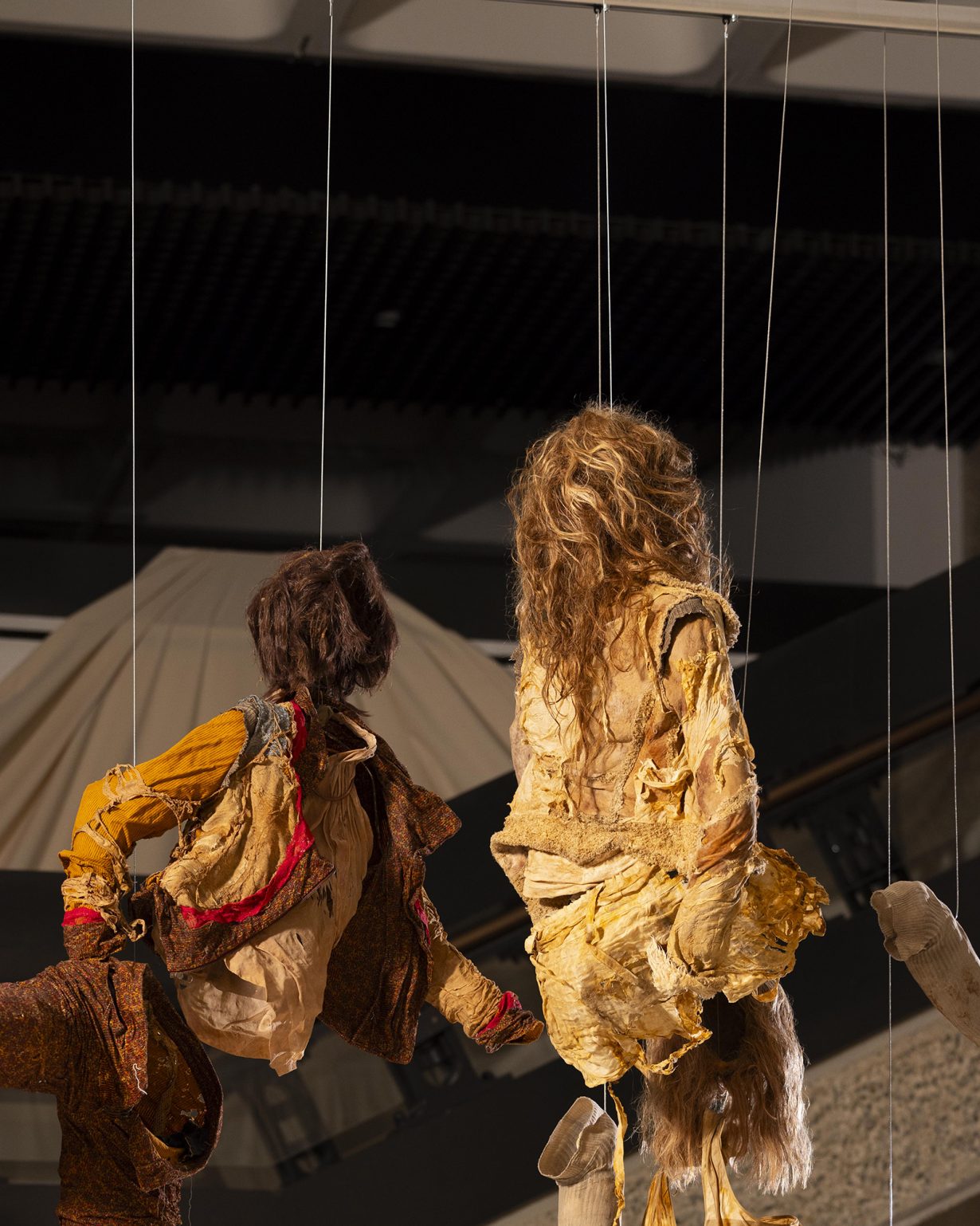
For much of the twentieth century, fascism aligned itself with the rhetoric of cleanliness: order, discipline, the scrubbed uniformity of the body politic. What we’re seeing now is not quite an inversion but an expansion. Here, control and disintegration aren’t oppositional. They are complementary, the tradwife and the wasteland heroine united by a shared appetite for the collapse of the current social order.
It’s all well and good to reclaim impurity as liberation, to find romance in what leaks and rots, and regenerative possibility in the relationship between fashion, folklore and the natural world. But if aesthetic disorder is going to be equated with dissent, we should ask what, exactly, it rejects. Dirt, as Mary Douglas reminds us, is just the mechanism by which boundaries are drawn and maintained. Dirty Looks’ paradox is that it remains, for all its talk of contamination, impeccably clean: an exhibition about mess that refuses to get any on its hands.
Rosalind Jana is a culture, art and fashion writer
Read next In fashion, is vulgarity ever worth it?
